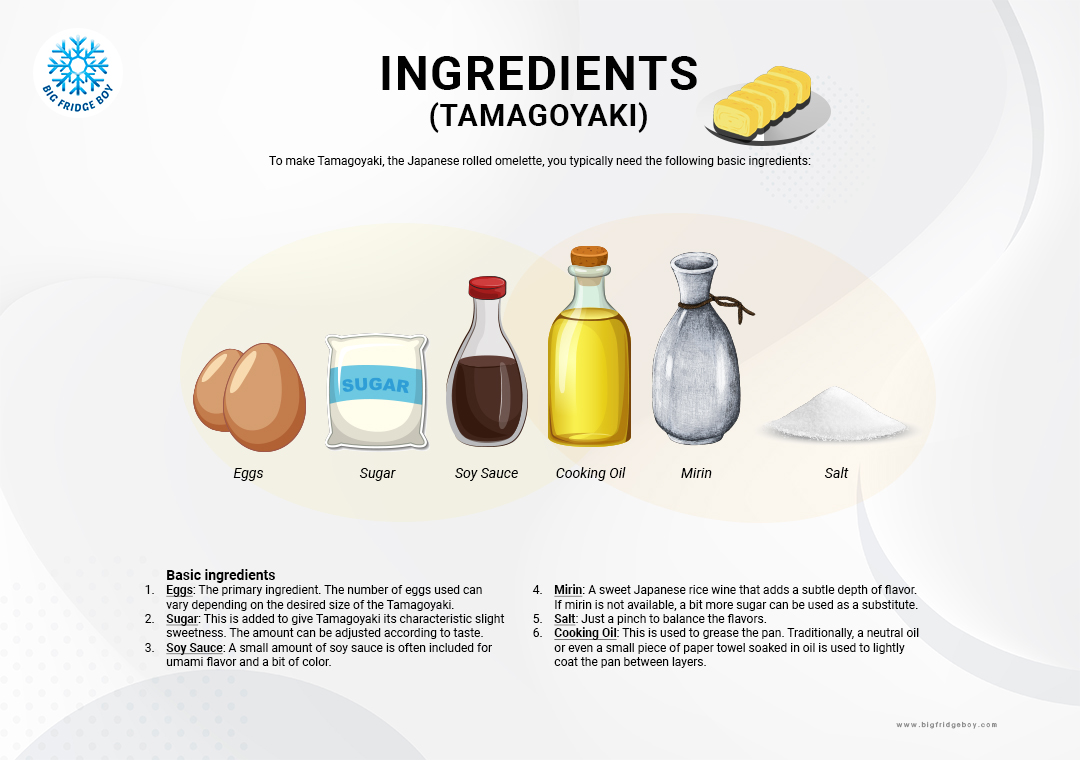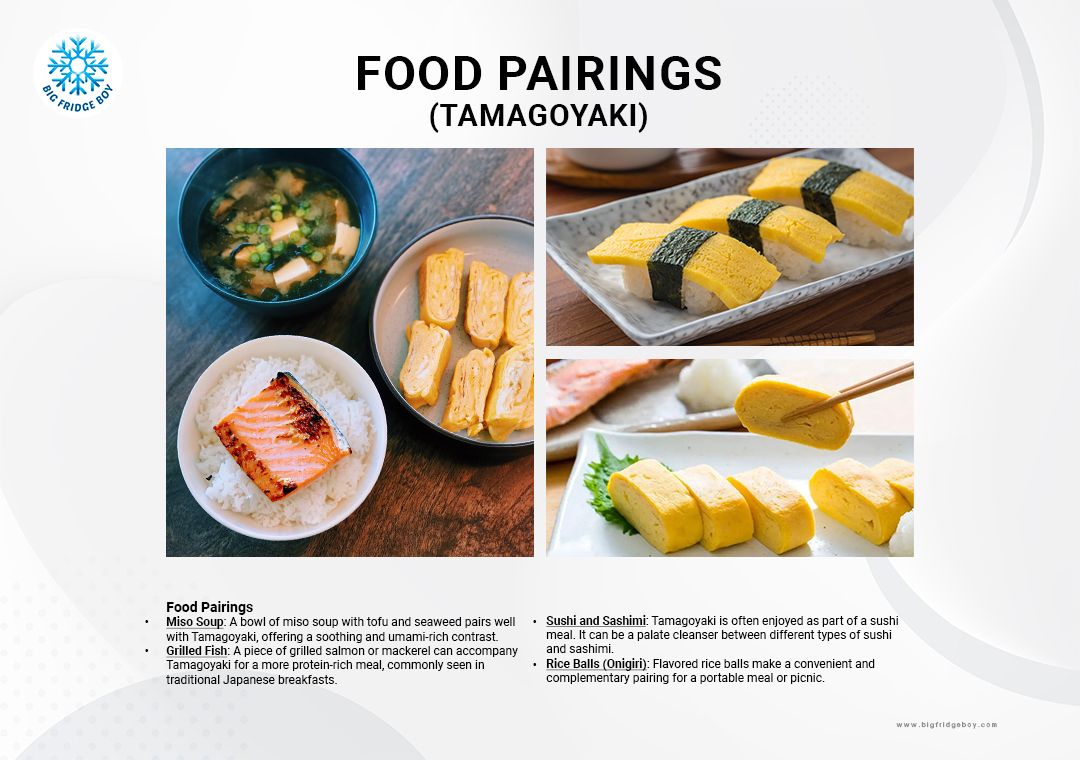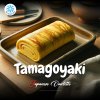"Everything You Need to Know About Tamagoyaki: The Japanese Omelette"

Tamagoyaki is a type of Japanese omelette, which is made by rolling together several layers of cooked egg. These are often prepared in a rectangular omelette pan called a Makiyakinabe. Tamagoyaki is commonly served for breakfast, added to bento boxes, or used as a topping for sushi. The taste and texture vary, but it's generally slightly sweet, light, and fluffy. It's a beloved Japanese dish that showcases the simplicity and elegance often found in Japanese cooking.
"Kai Wan" in Thai or "Tamagoyaki" in Japanese literally translates to "egg roll".
- Tamago means 'egg'.
- Yaki means 'grilled', 'fried' or 'cooked'.
The name comes from the method of making it. This involves frying eggs mixed with sweet ingredients like sugar and marinated in a seasoning such as soy sauce or mirin. Then roll the eggs in a specific rectangular pan. (Makiyakinabe) until it has a long square shape.
The use of the word "wan" in the name Khai Wan in Thai probably comes from the slightly sweet taste of Tamagoyaki from the ingredients used. Tamagoyaki usually have a mild sweet taste. and has a soft texture which makes it different from normal fried eggs And it is a characteristic that makes Japanese eggplant popular and widely known in many countries around the world.
Origin and History
The origin of "Kai Wan" or Tamagoyaki comes from Japan. and has a long and complicated history There are many sources regarding the origins of Tamagoyaki, but there is no clear information on who first made it.
Tamagoyaki is closely related to the Japanese "Sushi" and "Bento" dishes and has evolved many times over the centuries. The origins of Tamagoyaki may be traced back to the Edo period (1603-1868), when the culture and Japan's cuisine began to develop rapidly. Sweet eggs may have started with a dish called "Dashimaki Tamago", which was an egg roll that used dashi soup as the main ingredient.
Making Tamagoyaki is a delicate process and requires skill. Rolling eggs into perfect shape is a craft that takes practice, as tamagoyaki is a complex and delicate part of Japanese cuisine. Therefore, it cannot be clearly stated who invented it or made it the first time.
Nowadays, Tamagoyaki is popular in many different forms. and can be found both in Japanese restaurants and in the kitchens of ordinary families. It is considered one of the unique and widely known Japanese foods.
Cultural Significance
In Japanese Cuisine, Tamagoyaki is often eaten for breakfast, included in bento boxes, or served as a side dish. It represents the simplicity and elegance of Japanese cooking, requiring skill and attention to detail.

To make Japanese omelette (Tamagoyaki) using a Makiyakinabe pan, the steps are as follows:
1. Prepare the ingredients:
- Chicken eggs: about 3-4 eggs
- Sugar: 1-2 tablespoons
- Soy sauce (soy sauce): 1-2 teaspoons
- Mirin (if available): 1 teaspoon
- Salt: a pinch
- Water or dashi (Japanese broth): 1-2 tablespoons (according to taste)
2. Mix the ingredients:
- Place eggs, sugar, soy sauce, mirin, salt, and water or dashi in a bowl. Then beat until combined well.
3. Filter the ingredients:
- Strain the mixture through a fine sieve to remove egg clumps and undissolved ingredients.
4. Heat the pan. Makiyakinabe:
- Heat the Makiyakinabe pan to medium temperature. Lightly oil
5. Pour the ingredients into the pan:
- Using a soup scoop, scoop about 1/4 or 1/3 of the egg mixture into the pan.
6. Wait until the eggs begin to set:
- Wait until the eggs begin to set but are not yet fully cooked. Use a spatula or brush to smooth out the edges of the egg.
7. Egg Rolls:
- Roll the eggs from one side of the pan to the other until you have an egg roll.
8. Repeat the process:
- Apply a little oil again. Then pour in the additional egg mixture. Wait until the eggs begin to firm up and then roll the previously rolled eggs into the new eggs. Repeat this process until all of the egg mixture is gone.
9. Give the egg shape:
- When rolling eggs until all ingredients are gone. Use a spatula or brush to press the egg into a neat, rectangular shape.
10. Rest Khai Wan:
- Remove the eggs from the pan and set aside on a wire rack or paper towel to drain off the excess oil.
11. Cut into pieces:
- When the egg has cooled down and has the desired shape. Use a sharp knife to cut into pieces. according to the desired size
Heating a Makiyakinabe square pan to a medium temperature for making Tamagoyaki is generally around 160-180 degrees Celsius (320-356 degrees Fahrenheit). This temperature is ideal for cooking eggs neatly without burning or sticking to the pan. And it helps the eggs roll more easily without cracking or losing shape.
However, the recommended temperature may vary depending on the type of stove and pan used, so slight temperature adjustment may be required. It's best to start with medium heat and reduce or increase the heat as needed for best results.
Making Japanese sweet eggs or Tamagoyaki without a square-shaped Makiyakinabe pan is also possible. Although it is not perfectly shaped like a specialized pan, But it can be done with a regular pan as follows:
1. Use a round pan:
- Use a regular sized round pan to make Tamagoyaki by pouring the eggs into the pan and spreading it over the surface of the pan. Then, when the eggs begin to set Roll the egg from one side to the other. Then pour more eggs into the empty space. Repeat this process until the desired shape is achieved.
2. Use a regular square pan:
- If you have a square pan that is not a Makiyakinabe, you can use it to make tamagoyaki using the same method as a round pan.
3. Use baking paper (Parchment Paper):
- If you want a more square shape You can use baking paper to help roll the eggs. Place a piece of parchment paper on the pan and use it as a tool to roll the eggs.
4. Adjust the curling technique:
- The key to making Tamagoyaki is to roll the eggs neatly, so it may be necessary to adjust the rolling technique to suit the shape of the pan being used.
Although the shape may not be the same as in a Makiyakinabe wok, the taste and texture of the Japanese omelets remain the same. Making tamagoyaki is more about mixing the ingredients and controlling the heat while making it than the shape.
Burning Japanese sweet eggs (Tamagoyaki) can be caused by several reasons:
1. The temperature is too high:
- If the heating temperature is too high Eggs cook quickly and may burn before they have a chance to roll or set well.
2. Not regularly flipping or rolling eggs:
- If you don't flip or roll the eggs often enough Parts touching the bottom of the pan will be exposed to heat for too long and may burn.
3. Using inappropriate lights:
- Using fire that is too strong can burn the eggs. Medium or medium-low heat should be used when making Tamagoyaki.
4. The pan is not adequately oiled:
- If the pan is not oiled enough Eggs may stick to the pan and burn.
5. The egg mixture is too high in sugar:
- Sugar is at risk of burning when exposed to high heat. If too much sugar is added to eggs This will increase the chance that the eggs will burn.
6. Not stirring or beating the eggs well:
- Not stirring or beating the eggs thoroughly may cause some of the eggs to be thick and some to be thin. When frying, the thin portions may burn.
7. Not keeping an eye on it while doing it:
- Making Tamagoyaki requires close attention and supervision. If eggs are left unattended on the fire they may burn.
To avoid burning the eggs, it is important to control the temperature carefully, flip or roll the eggs regularly, use enough oil, and beat the ingredients thoroughly. It also requires constant attention and care while doing it. To make Japanese sweet eggs soft and beautiful in color.

Food Pairings
- Miso Soup: A bowl of miso soup with tofu and seaweed pairs well with Tamagoyaki, offering a soothing and umami-rich contrast.
- Grilled Fish: A piece of grilled salmon or mackerel can accompany Tamagoyaki for a more protein-rich meal, commonly seen in traditional Japanese breakfasts.
- Sushi and Sashimi: Tamagoyaki is often enjoyed as part of a sushi meal. It can be a palate cleanser between different types of sushi and sashimi.
- Rice Balls (Onigiri): Flavored rice balls make a convenient and complementary pairing for a portable meal or picnic.
Nutritional Value
- Protein-Rich: High in protein from the eggs.
- Other Nutrients: Contains vitamins and minerals, but also cholesterol and sodium, particularly if soy sauce is used.
- Caloric Content: Moderate, but varies based on the amount of sugar and oil used.
Tamagoyaki, with its delicate layers and unique preparation, is more than just a Japanese omelette; it's a culinary symbol of Japan's rich heritage. Its origins, influenced by foreign cuisines and perfected during the Edo period, reflect the fusion and evolution of Japanese cooking. Not only is it a protein-rich and versatile dish, easily paired with various foods like rice, miso soup, and sushi, but it also embodies the elegance and precision central to Japanese gastronomy. Whether enjoyed in a homely breakfast, a bento box, or as part of a sushi meal, Tamagoyaki remains a beloved staple, representing the simplicity and finesse of Japanese cuisine.





